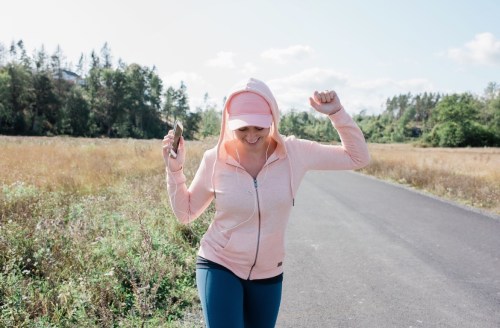When I hop on the phone to interview walking coach and ACE-certified fitness instructor Michele Stanten, she’s (surprise, surprise) out on a walk. Stanten tells me that she makes a concerted effort for every possible meeting to go the extra mile, but in order for any walker (herself included) to get the most out of the movement, it’s absolutely necessary to cross-train. Period.
Experts in This Article
walking coach, ACE-certified fitness instructor, author, and creator of My Walking Coach
“As with any type of activity, if we keep doing the same motion over and over, we increase our risk of overuse injuries and imbalances in our muscles,” says Stanten. “If we keep working the same muscles all the time and ignore the other ones, they become weak and that can set us up for injury.” You heard that right: Walking may be a low-impact activity, but it requires just as much as cross-training as running, biking, or any other movement pattern.
“As with any type of activity, if we keep doing the same motion over and over, we increase our risk of overuse injuries and imbalances in our muscles.” —Michele Stanten, walking coach
Let’s take an audit of the muscles and movement patterns required in walking, shall we? When you don your sneakers and head out the door, you’re working three muscle groups in your legs: your quads, glutes, and hamstrings. And yes, the arms are getting a little action, too. Because walking (like running and unlike swimming) is a weight-bearing activity, there’s a lot of demand on your muscles and joints as one mile becomes two—and so on.
Bearing that in mind, Stanten says three types of exercise will rap perfectly with your walking routine (whether you want to walk a mile or 26.2—as many of her clients do). Ready to become a stronger, faster walker? Keep scrolling to pick up the perfect cross-training workout for you.
1. Strength training: To make sure every muscle is getting some love
“Strengthening those muscles is going to give you a more powerful stride so that you’re going to be able to walk faster. From strengthening your core muscles, you’re going to have better posture and your back won’t start aching as you go longer distances,” says Stanten. Ideally, you’ll incorporate a couple of full-body strength training workouts per week, but if you remember only one thing, Stanten wants it to be three words: Work. That. Core.
Give this core workout a go:
2. Swimming: For a full-body cardio sesh that hits your arms
In the summer, Stanten swears by heading to your local beach, lake, pond, or pool and splashing around for your cross-training (just don’t forget your sunscreen!). “Swimming works my whole body together and also hits more of the upper body muscles that are not getting as much attention with walking,” says Stanten. If the backstroke and butterfly aren’t your jam, she says you can strengthen your arms with sports like tennis or racquetball instead.
3. Yoga: For toning the tiny muscles you might not use on walks
“Yoga is another great one in terms of getting strength benefits, working those alternate smaller muscles that might not be getting worse as much with walking, and also the flexibility,” says Stanten. “Our hip flexors tend to get tight from other sitting that we’re doing, and those are key players with leg-swing when you’re walking. So tight hip flexors can contribute to back pain and having a less smooth stride.” All those forward folds, backbends, and chaturangas make quick work of kneading out the nooks and corners of your body that need it.
Get a little sweaty with this strengthening yoga flow:
Sign Up for Our Daily Newsletter
Get all the latest in wellness, trends, food, fitness, beauty, and more delivered right to your inbox.
Got it, you've been added to our email list.











